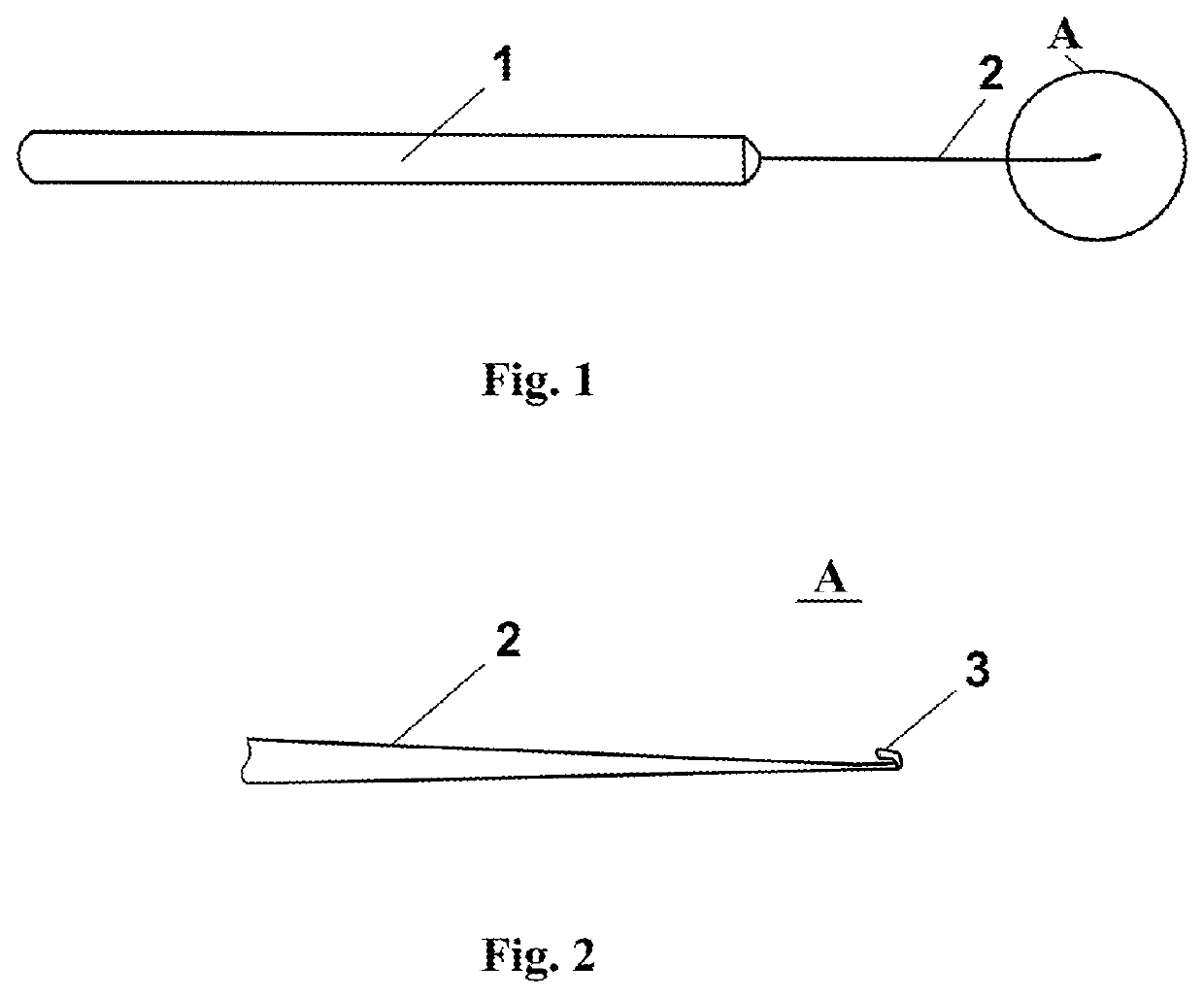Method for treating stage 1 macular hole without vitectomy and the instrument for realisation thereof
a technology for macular holes and vitectomy, applied in the field of ophthalmology, can solve the problems of over- 50% of the cost of the method, the drugs used in the implementation of the method are very high, so as to reduce the number of related complications, reduce the number of trauma, and improve the effect of visual control
- Summary
- Abstract
- Description
- Claims
- Application Information
AI Technical Summary
Benefits of technology
Problems solved by technology
Method used
Image
Examples
Embodiment Construction
[0022]The instrument used for implementation of the subject method is an ophthalmological membrane spatula comprising a handle 1 and a pointed working part 2 with a tip 3 shaped as a hook. The semantic meaning of the term “membrane spatula” used by the applicant is “a narrow elongated thin elastic plate”.
[0023]The implementation of the subject method by means of the said tool is explained as follows.
[0024]In a patient with the diagnosis of “the first stage 1 of macular hole”, two valve ports, which are metal bushings by the diameter of 0.54 mm, are positioned in the vitreal cavity 3-4 mm from the limb on the are marks of “10 o'clock” and “2 o'clock”. The bushings have check valves that pass the instruments into the vitreal cavity and block the flow of fluid from the vitreous body. A light guide with a mercury light source is introduced into one of the ports, providing illumination within 1000-2000 lux. Into the other port, a ophthalmic membrane spatula comprising a handle and a poin...
PUM
 Login to View More
Login to View More Abstract
Description
Claims
Application Information
 Login to View More
Login to View More - R&D
- Intellectual Property
- Life Sciences
- Materials
- Tech Scout
- Unparalleled Data Quality
- Higher Quality Content
- 60% Fewer Hallucinations
Browse by: Latest US Patents, China's latest patents, Technical Efficacy Thesaurus, Application Domain, Technology Topic, Popular Technical Reports.
© 2025 PatSnap. All rights reserved.Legal|Privacy policy|Modern Slavery Act Transparency Statement|Sitemap|About US| Contact US: help@patsnap.com

